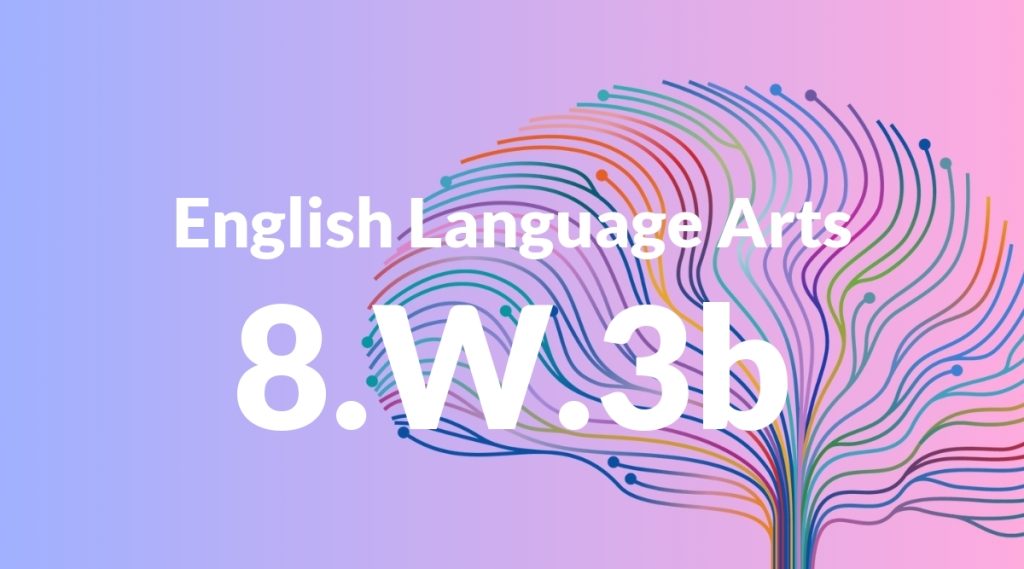Standard: 8.W.3b – Use narrative techniques, such as dialogue, pacing, description, and reflection, to develop experiences, events, and/or characters.
Grade level: Grade 8
Subject: English Language Arts
Domain: Writing
Teacher Overview
This standard focuses on the use of narrative techniques to enhance writing. By incorporating dialogue, pacing, description, and reflection, students can create more vivid and engaging narratives. This skill is crucial for developing effective storytelling abilities, which are valuable not only in English Language Arts but also in other subjects and real-world situations. Before tackling this standard, students should understand the basic elements of a narrative and have experience writing simple stories. They should be comfortable with basic grammar and sentence structure to ensure their writing is clear and coherent.
Mastering this standard will enable students to write more engaging and complex narratives. They will be able to analyze and critique literary works more effectively, understanding the techniques authors use to develop their stories. This skill set will be valuable in advanced literature and creative writing courses.
Common Misconception 1
A common misconception is that narrative techniques are limited to dialogue. While dialogue is an important aspect, other techniques like pacing, description, and reflection also play a crucial role in developing a story. Students need to understand that these elements work together to create a rich narrative.
Intervention 1
Use mentor texts that exemplify various narrative techniques. Have students identify and analyze these techniques in the texts, then practice incorporating them into their own writing through targeted exercises.
Common Misconception 2
Another misconception is that narrative techniques are only applicable to fictional writing. In reality, these techniques can enhance non-fiction writing as well, making personal essays, memoirs, and other non-fiction works more engaging and relatable.
Intervention 2
Provide examples of non-fiction texts that use narrative techniques effectively. Encourage students to write personal essays or memoirs, applying the techniques they have learned to make their writing more compelling.
Prerequisite Knowledge
Students should have a basic understanding of narrative structure, including the elements of a story (e.g., setting, characters, plot, conflict, and resolution). They should also be familiar with basic grammatical concepts and sentence construction.
Subsequent Knowledge
After mastering this standard, students will be able to create more complex and engaging narratives. They will also be better prepared to analyze and critique literary works, understanding how authors use various techniques to develop their stories. This foundation will support future studies in advanced literature and creative writing courses.
Instructional Activities
- Analyze mentor texts to identify narrative techniques
- Write short stories incorporating dialogue, pacing, description, and reflection
- Create character backstories using detailed descriptions
- Develop and perform scripts for class plays or video projects
- Write reflective essays or journals focusing on personal experiences




